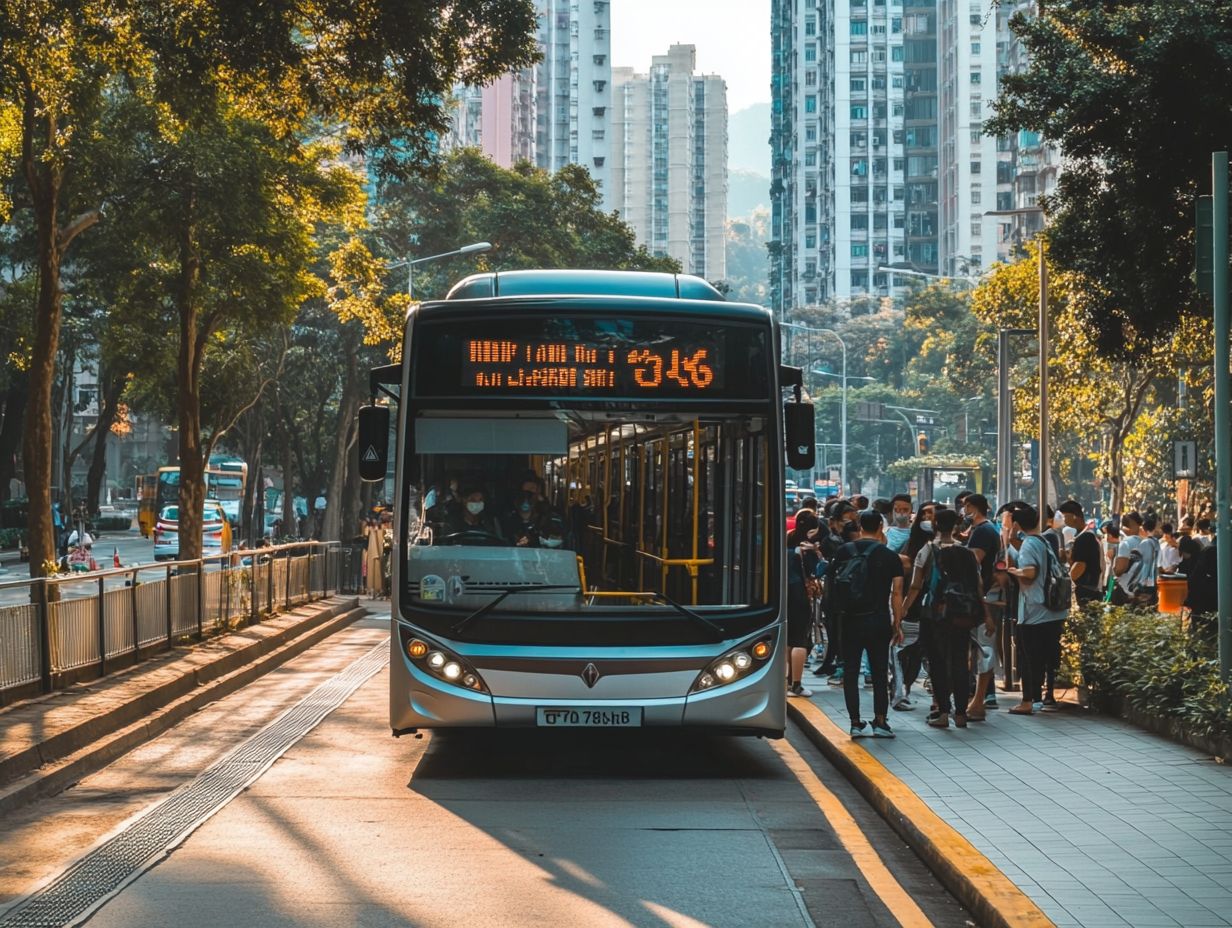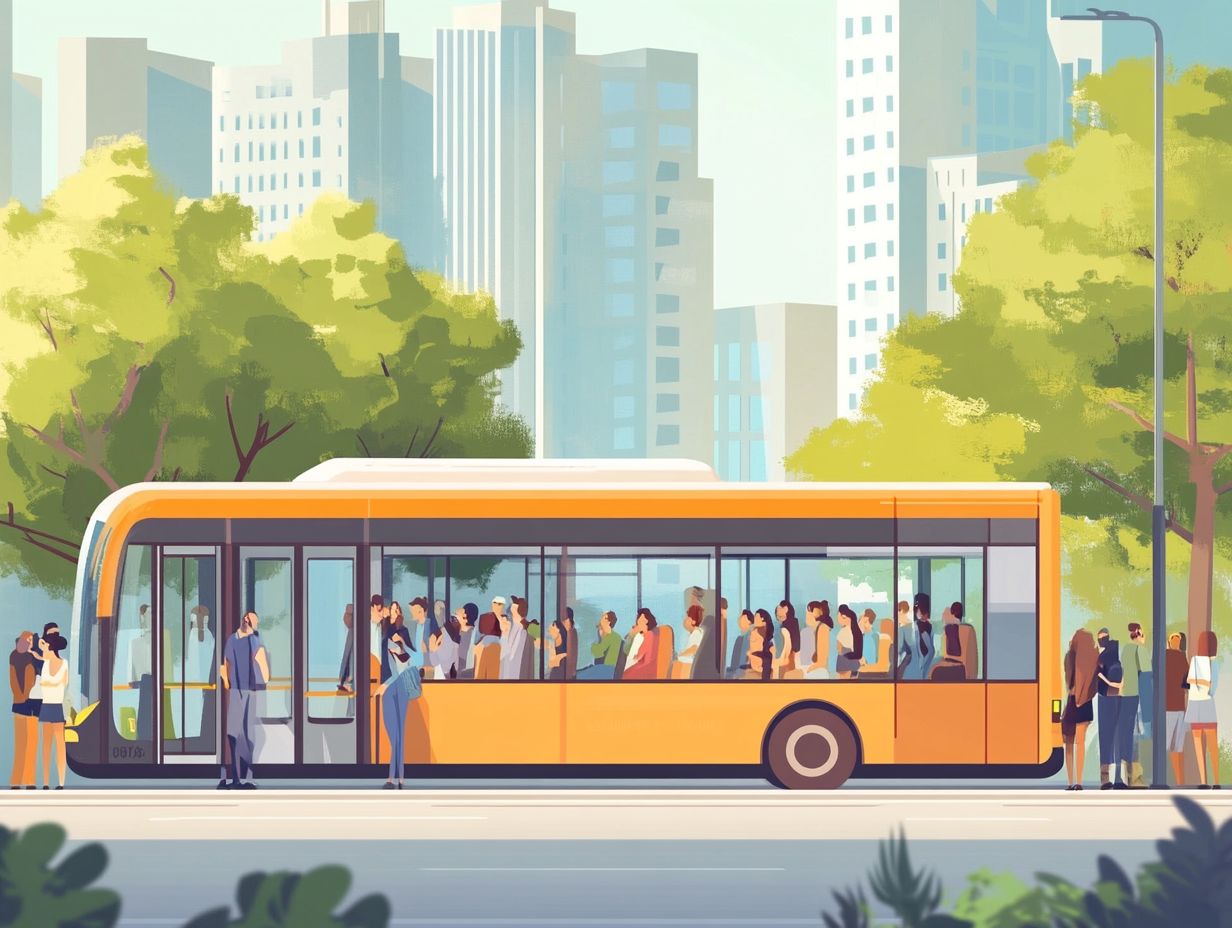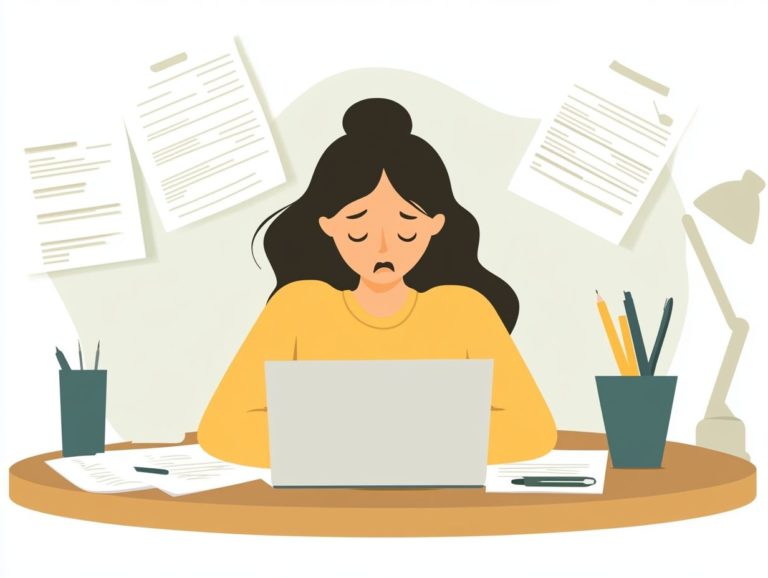How Does Using Public Transport Affect Rates?
Public transport shapes urban life. It also influences economic dynamics.
This article explores how public transport affects rates. It looks at factors like environmental benefits and economic impacts.
It discusses challenges riders may face, such as accessibility and time. It also highlights essential factors that impact public transport rates, like infrastructure and population density.
You ll discover solutions to enhance public transport systems. Let’s uncover the relationship between public transport and rates together.
Contents
- Key Takeaways:
- The Impact of Public Transport on Rates
- Benefits of Using Public Transport
- Challenges of Using Public Transport
- Factors Affecting Rates
- Solutions for Improving Public Transport and Rates
- Frequently Asked Questions
- How does using public transport affect rates?
- What types of rates are affected by using public transport?
- Does using public transport have a positive impact on the environment?
- How does using public transport benefit individuals?
- Is the cost of using public transport more affordable than owning a car?
- What other factors can be affected by using public transport?
Key Takeaways:

- Using public transport can positively impact rates by reducing the overall cost of transportation and improving the environment.
- The challenges of using public transport, such as accessibility and cost considerations, can be improved by building better transport options and offering incentives for its use.
- Factors such as population density and demand play a significant role in determining public transport rates. Governments must carefully plan and invest in efficient and accessible transport systems.
The Impact of Public Transport on Rates
Public transport plays a crucial role in determining transportation costs for you, especially if you live in an urban area where commuting patterns are largely shaped by the availability and efficiency of public transit options.
The economic influence of public transportation goes far beyond mere convenience. It impacts community resources and the overall urban infrastructure while tackling issues like car dependency and sustainable transport solutions.
For low-income households, access to reliable public transport can significantly ease the financial strain that comes with vehicle ownership and maintenance. This promotes equitable transit systems that benefit a range of income levels.
Understanding the Relationship
Understanding the intricate relationship between public transportation and transportation costs is essential, especially in the context of income inequality in the United States. Low-income communities often rely heavily on public transit for their mobility needs.
Research indicates that neighborhoods with better access to public transportation generally enjoy lower overall transportation costs. Studies from the Urban Institute reveal how these costs place an undue burden on low-income families, compelling them to allocate a larger portion of their income towards commuting expenses.
Organizations like the Institute for Transportation and Development Policy (ITDP) demonstrate that enhancing public transit systems not only alleviates financial strain but also improves access to job opportunities, fostering greater economic mobility. The connection between robust public transit options and transportation costs emerges as a vital factor in combating urban poverty and strengthening community resilience.
Benefits of Using Public Transport
Utilizing public transport offers a wealth of advantages that significantly influence both the environment and the economy, while providing substantial savings for you as a user.
As urban areas continue to develop, the benefits of public transit systems go beyond mere convenience; they encompass broader economic impacts, such as job creation and improved access to community resources.
Public transit also reduces carbon emissions by decreasing reliance on cars. It positions itself as a sustainable transportation option that aligns seamlessly with global climate objectives.
Environmental Benefits
The environmental benefits of public transport go far beyond mere convenience! They play a pivotal role in significantly reducing carbon emissions and the associated costs, aiding in the fight against climate change.
Studies show that switching from personal vehicles to public transport can reduce greenhouse gas emissions by up to 45%.
Take Amsterdam, for instance. Its robust cycling and public transit network has earned it the title of having the lowest carbon footprint among urban areas in Europe, showcasing an impressive 25% decrease in overall emissions since the early 2000s.
Vancouver’s commitment to sustainable public transport has improved air quality significantly, with research indicating a 15% reduction in harmful pollutants over the past decade. These examples show how effective sustainable transportation initiatives contribute to cleaner air and resilient urban environments.
Economic Benefits

Public transport acts as a powerful catalyst for economic development! It offers significant savings in transportation costs while simultaneously fostering job creation in urban areas.
By connecting you to essential services and employment opportunities, transit systems enhance access and mobility, driving local economies forward. Cities investing in rail systems like the Bay Area Rapid Transit in California have seen a remarkable 20% increase in local employment within neighboring communities.
A report from the American Public Transportation Association reveals that for every $1 you invest in public transit, approximately $4 is generated in economic returns. This highlights the critical role of funding for public transport systems in cultivating sustainable growth.
Investing in public transport builds community strength and creates diverse economic opportunities. This leads to thriving urban areas!
Challenges of Using Public Transport
While public transport offers a wealth of benefits, it also presents challenges that can undermine its effectiveness, especially regarding accessibility and convenience for users. Low-income households and communities frequently encounter obstacles such as high transportation costs, inadequate infrastructure, and limited public transit services.
These barriers can discourage potential riders and worsen existing commuting patterns. Tackling these issues is crucial for transforming public transport into a truly viable way to get around for everyone!
Accessibility and Convenience
Accessibility and convenience are paramount when it comes to the effectiveness of public transportation systems. They play a crucial role in how well these systems serve diverse communities.
Certain barriers prevent low-income neighborhoods from fully reaping the benefits of available services. Limited access to transit can have a profound impact on job opportunities, healthcare, and educational resources for individuals in these areas. The scheduling and frequency of routes often fail to align with users’ varying needs, leading to extended wait times and challenges in planning journeys.
To improve accessibility, cities could consider introducing demand-responsive transport services tailored to these communities.
By integrating technology, such as real-time updates and mobile apps, the user experience can be vastly enhanced, making public transportation a more appealing and viable option for everyone.
Support your local public transport initiatives to help build a better community!
Cost and Time Considerations
When considering public transportation, cost and time are critical factors. You need to weigh the financial burden of owning a vehicle against the potential savings that public transit can provide.
Several elements, such as your distance from work, the frequency of service, and the available routes, shape your commuting patterns. For many, balancing monthly transit passes with expenses like gas, insurance, and vehicle maintenance reveals differing perspectives based on income levels.
If you re in a higher-income bracket, you might prioritize time and convenience, gravitating toward faster alternatives. Conversely, if your financial situation is tighter, you re likely to focus more on costs, which may lead to longer commute times.
Ultimately, the choices you make as a commuter highlight a complex relationship between your economic circumstances and how you value time savings in relation to expenses.
Factors Affecting Rates
Several factors significantly influence public transport rates, with public transport infrastructure, population density, and demand playing pivotal roles in shaping transportation costs and accessibility.
Understanding these elements helps you navigate the complexities of public transport pricing, ensuring informed decisions about your travel options.
Public Transport Infrastructure

Public transport infrastructure serves as the backbone of effective transit systems, significantly influencing transportation costs and accessibility for users like you.
In urban areas, securing funding for public transit systems often stands as a barrier to maintaining and enhancing infrastructure. When financial resources are scarce, it can lead to aging facilities and unreliable service, forcing you to choose more expensive private transportation methods, which further aggravates traffic congestion and environmental issues.
Investing in robust infrastructure not only reduces overall transportation costs but also improves your commuting experience. This enhancement encourages more individuals to embrace public transit as a practical and appealing choice for their daily travel needs.
Population Density and Demand
Population density and demand are crucial in evaluating the viability and effectiveness of public transportation in urban areas.
In high-density regions, where residents live and work in close proximity, there is a greater reliance on public transit options for daily commutes. This is evident in bustling metropolitan hubs like New York City and Tokyo, where integrated transport solutions accommodate a high volume of commuters.
Through meticulous urban planning, these cities have shown how prioritizing transit-oriented development can reduce traffic congestion while enhancing access to essential services. Case studies illustrate that strategic approaches can optimize transportation networks, ensuring they cater to the needs of growing populations and foster sustainable urban living.
Solutions for Improving Public Transport and Rates
Enhancing public transport and its rates requires strategic investments in infrastructure and innovative incentives that encourage usage.
This approach cultivates equitable transit systems that benefit all communities.
Take action today! Advocate for better public transport options in your community and consider making public transit your choice for daily travel.
Investment in Infrastructure
Your investment in infrastructure is vital for the success of public transport systems. It establishes the foundation for reliable and efficient services tailored to the needs of the community.
When you prioritize well-planned public transit, you’re enhancing accessibility and nurturing economic growth and sustainability. Effective urban planning focuses on creating integrated transport networks, which connect various modes of transit. This reduces dependence on personal vehicles and eases traffic congestion.
Look at Amsterdam, a city that has transformed commuting with its cycling and public transport systems. Similarly, the expansion of the METRO system in Los Angeles has significantly improved connectivity across the sprawling city. This highlights the positive impact that prioritizing public transit funding and development initiatives can have when they genuinely align with the community’s needs.
Incentives for Public Transport Use
Creating incentives for public transport use can enhance your ridership while providing you with valuable transportation savings. This makes public transit a more appealing choice.
By offering financial support that lowers prices, introducing discount programs for students and seniors, and launching community initiatives that promote carpooling or van-sharing, local governments can increase the likelihood that you will choose public transport over driving your own vehicle.
These strategies tackle the financial concerns many commuters face and cultivate a sense of community and shared responsibility for sustainable travel.
When diverse mobility options are promoted like bike-sharing schemes and electric scooter rentals the overall transit experience becomes seamless and enjoyable. This integration ultimately increases public transit ridership and helps alleviate traffic congestion, benefiting everyone involved.
Frequently Asked Questions

How does using public transport affect rates?
Using public transport often leads to lower rates of pollution and traffic congestion. This results in a cleaner and more efficient transportation system for everyone.
What types of rates are affected by using public transport?
Using public transport can impact various rates, including air pollution, carbon emissions, and traffic accident rates.
Does using public transport have a positive impact on the environment?
Yes, using public transport can significantly reduce the negative impact on the environment. It lowers greenhouse gas emissions and promotes sustainable transportation options.
How does using public transport benefit individuals?
Using public transport can save individuals money on gas and car maintenance costs. It also reduces stress levels by avoiding traffic congestion and the hassle of finding parking.
Is the cost of using public transport more affordable than owning a car?
In most cases, yes. The cost of public transport is typically much lower than owning and maintaining a car, making it a more budget-friendly option.
What other factors can be affected by using public transport?
In addition to rates and the environment, using public transport can impact economic growth. It reduces transportation costs for businesses and creates job opportunities in the transportation sector.
Join the movement for a cleaner, more sustainable city. Choose public transport today!






